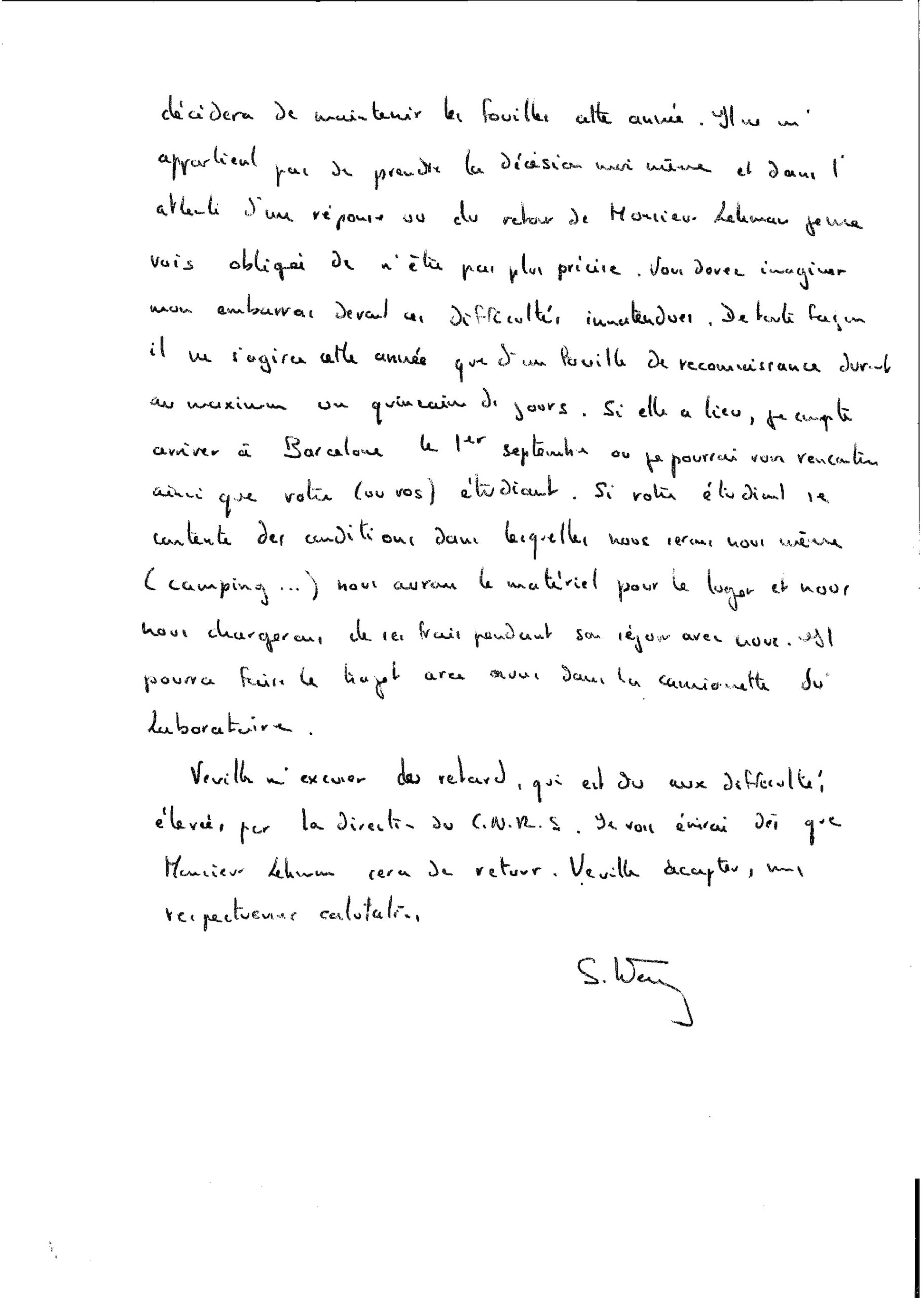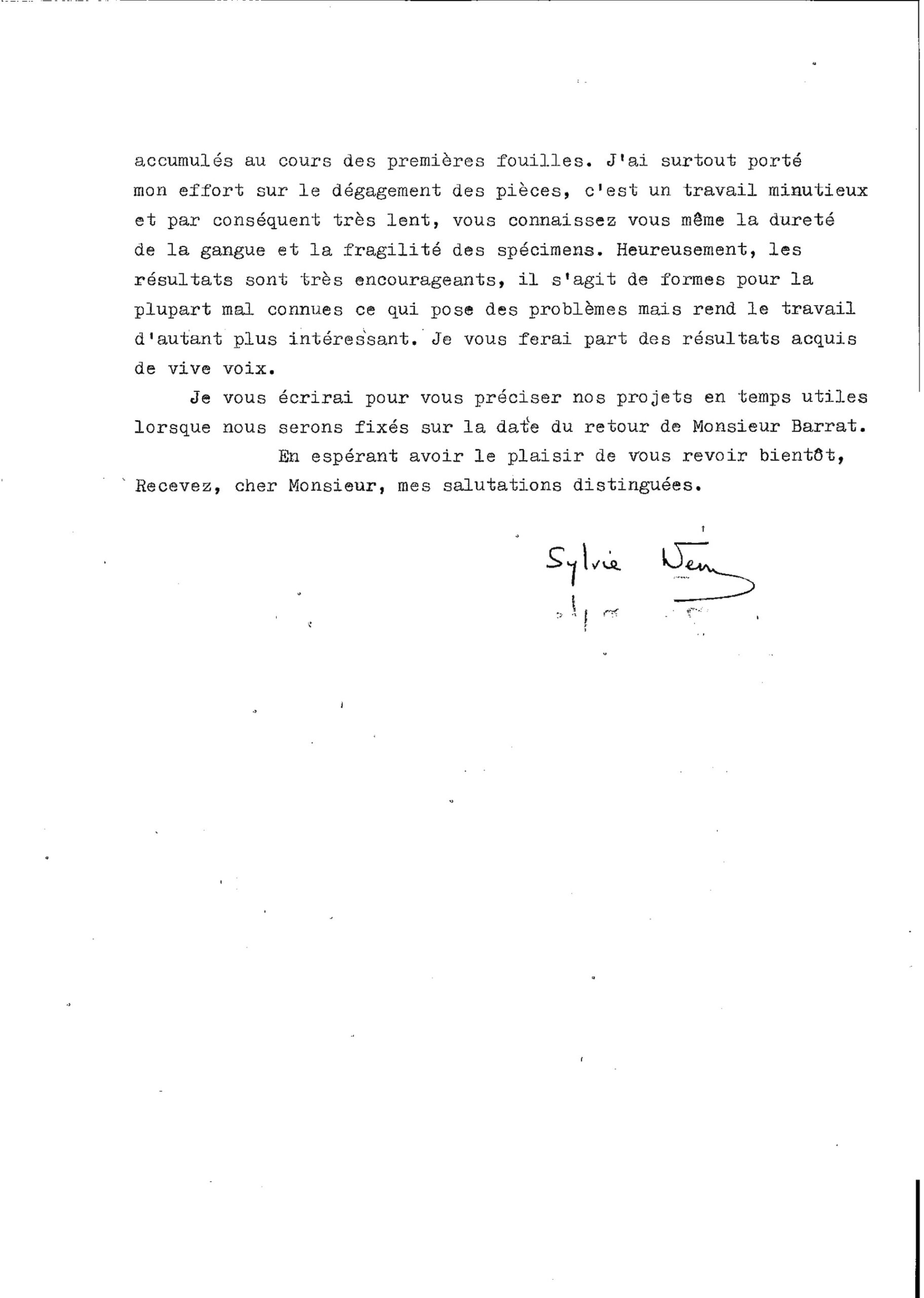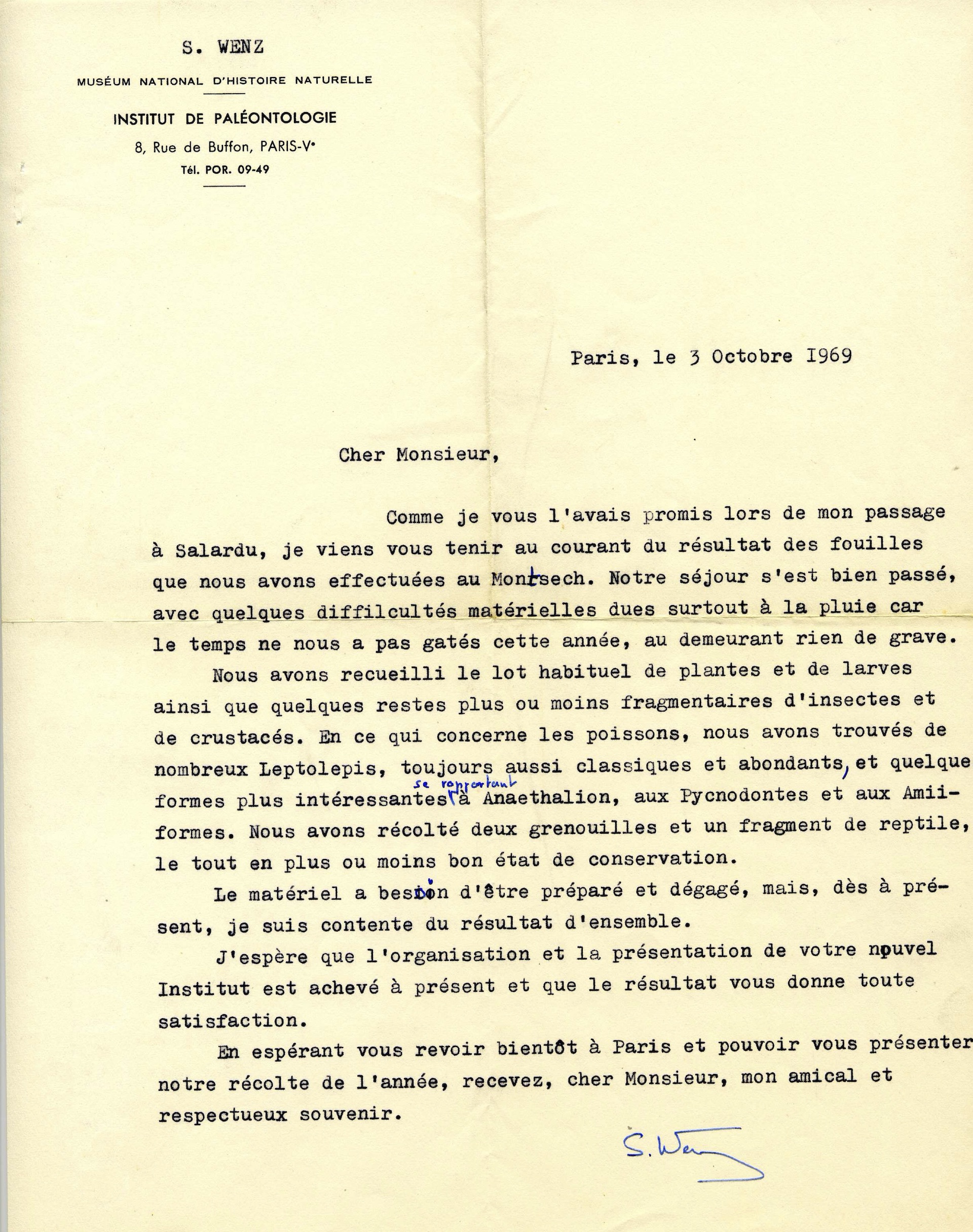The campaigns of the Natural History Museum of Paris
The Crusafont connection again
10 years have passed since Dr. Wonnacott’s first contact with Dr. Crusafont, and now he has been appointed professor at the University of Oviedo and the University of Barcelona. Its relevance within the world of palaeontology in particular and science in general is increasing, year after year, and it already has in mind the creation of the new Institute of Paleontology.
Crusafont is a good scientist but at the same time he also wants to expand the collection that at that time rested and was exhibited in the Museum of History of the City. To obtain the maximum number of fossils it was essential to have control over the excavation campaigns despite not having any official responsibility in the control of excavations and, even less, in the delivery of excavation permits, almost everyone asked permission from Dr. Crusafont. And that’s what Sylvie Wenz, a student at the Institute of Paleontology at the National Museum of Natural History in Paris, did in 1964. Surely his bosses told him to go to Dr. Crusafont first when he decided to resume the excavations of the site where Vidal or Wonnaccott had worked.
Preparing the first excavation campaign
The first excavation of Sylvie Wenz began to be prepared by letter in the letters and permits she requested from Crusafont. In a first letter dated August 5, 1964 (document 6396, Crusafont Archive/ICP), she tells him, right away, that she is clear that Dr. Crusafont has absolute priority over any piece he can find and that if new types of fossil fish are found, they will stay in Barcelona. However, he cannot assure him that he will be able to start the work since at that time he has serious financial problems because the director of the Centre National de la Recherche Scientifique, Mr. Lehman, had reduced the resources already granted by more than 60%. Without knowing whether the funding for the excavations would be maintained, Wenz tells Crusafont that, if that year’s campaign is carried out, it will be a reconnaissance of the land and will last a maximum of 15 days. In this case, you can expect to arrive in Barcelona on September 1 to meet the Crusafont student and the costs of accommodation and travel will be borne by the French museum. Finally, two weeks later, Mr. Lehman gave the go-ahead for the planned plan of activities (letter of 24 August; document 6406, Crusafont Archive/ICP).
Once that first campaign in 1964 was over, Sylvie Wenz made a summary of the fossils recovered from Paris (letter of 29 September 1964; document 6424, Crusafont Archive/ICP). He explains that the campaign of that year had an effective excavation duration of 15 days, in which dynamite was not used, but they took advantage of part of the abundant blocks already detached. He also informs him that they have found about twenty Leptolepis, most of them containing mold and countermold, some of them well preserved. The other genera of fish are represented by only one specimen each. It lists the presence of Mesodon, Propterus, Notagogus and, probably Aetlalion, Ophiopsis and Caturus. He points out that they have not found any frogs, reptiles, or mammals but they have found crustaceans, and 3 or 4 insects. He also thanks the student who went with them to the site and who actively participated in the excavation. As a curious note, Wenz asks Crusafont if his student has already told him that a German student from the University of Berlin and two assistants from the same university were found at the site.


Second campaign, 1965
On July 30, 1965 (document 6867, Crusafont Archive/ICP), Wenz asked Crusafont for a new authorization to carry out an excavation campaign at the beginning of September. He also asks if he can provide another student to work at the site. The excavations are expected to start at the beginning of September.
Third campaign, 1967
On June 20, 1967 (document 7061, Crusafont Archive/ICP), Wenz wrote to Crusafont to inform him of a new excavation campaign. Wenz tells him that this year he was waiting for the return of Monsieur Barrat, who at that time was in Ethiopia with Drs. Arambourg and Coppens. For all these reasons, it seems that the start of the campaign would be delayed until September 15-18, which would imply a short campaign, of 15 days counting the routes and the installation of the camp. In addition to the participation of Mr. Barrat, the participation of Mademoiselle Janot and two paleontology students is also planned. He also tells him that, as in other years, he hopes that one of his students can join them since, during the previous campaigns, he has been of great help and that during the winter he has begun to prepare the pieces of the previous campaign, a very slow work due to the hardness of the sediment and the fragility of the specimens. From what he is seeing, the results are very encouraging, since they are little-known ways that make the work more interesting.
It seems that Crusafont complained about Wenz’s silence after the 1967 campaign, and she replied to him by letter all the details of the finds. In the letter he explained that the previous campaign had taken place without incident but without extraordinary findings (letter of 18 January 1968; document 7181, Crusafont Archive/ICP). Leaving aside fragments of plants, larvae, insects and crustaceans, most of the fish found correspond to Leptolepis and some samples of Pleuropholis. The discovery of the latter finally allows us to affirm the presence of this genus at the site. He told him about the discovery of the head of a frog (without the axial skeleton) and in a very poor state of preservation.
As a result of these campaigns, Wenz had prepared a preliminary note on the ichthyological fauna of Montsec in which two new species were presented, which, if there was no inconvenience on the part of Crusafont, he would deposit in the Museum of Sabadell.


Fourth campaign, 1969
In 1968 there was no campaign in La Pedrera and in the letter of 8 May 1969 (document 7404, Arxiu Crusafont/ICP), Wenz comments that after the previous year’s stoppage, he plans, provided he finds the appropriate funding, to carry out a 15-day excavation campaign again between 20 August and 10 July of the same year. He counts on Mns. Heyler and his wife, and for this reason he asks for the necessary authorization.
A month later (document 7416, Crusafont Archive/ICP), Wenz tells Crusafont that a few years ago he went to see the collection of Montsec fish deposited in the Martorell Museum in Barcelona (now the Museu de Ciències Naturals de Barcelona) and that he has just returned from London to see the specimens of Wonnacott’s campaigns. It seems that the museum in London lent her the fish sample to continue her studies in Paris but she was also very interested in the specimens of Vidalmia. That is why he asks Crusafont if he can intercede in the loan of copies of Vidalmia from the Martorell Museum, under the responsibility of Professor Maximino San Miguel de la Cámara. Crusafont, however, replies that she does not have a good relationship with Professor San Miguel, with whom they appear section at the University of Barcelona, and recommends that she consult the Martorell Museum herself.
At the end of the 1969 campaign, Wenz comments that, despite some rain problems (letter of 3 October 1969, document 7446, Crusafont Archive/ICP) the work made it possible to collect the usual batch of plants and larvae, as well as some more or less fragmentary remains of insects and crustaceans. As for fish, they found numerous Leptolepis and some forms of Anaethalion, pycnodons and amiiformes. They also found two frogs and a reptile fragment.

Latest campaigns
At the beginning of May 1970 Sylvie Wenz visited the Museu de Paleontologia de Sabadell and the Martorell Museum to see the fish of Meià, which allowed her to finish the study of a genus and collect observations to continue her studies. On his return to Paris, he thanked Crusafont for his kindness (13 May 1970; document 7585, Crusafont Archive/ICP). In 1972 Wenz sent Crusafont a summary of the findings, as he did every year that there was excavation (letter of 24 October 1972; document 7878, Crusafont Archive/ICP). In that year, a reduced excavation was carried out with a team of 4 people for 15 days, in which the weather was bad, which affected the results. He claims that they did not find anything special: the usual plants, crustaceans, insect fragments, larvae and a beautiful Microdon fish.
